The potential difference across a inductor as a function of time is shown in figure. Assume that the initial value of the current in the inductor is zero. What is the current when ? and ?

The correct Answer is:
Step by step video, text & image solution for The potential difference across a 150 mH inductor as a function of time is shown in figure. Assume that the initial value of the current in the inductor is zero. What is the current when t=2.0 ms? and t = 4.0 ms ? by Physics experts to help you in doubts & scoring excellent marks in Class 12 exams.
Topper's Solved these Questions
- BOOK - PHYSICS GALAXY - ASHISH ARORACHAPTER - ELECTROMAGNETIC INDUCTION AND ALTERNATING CURRENTEXERCISE - Practice Exercise 5.413videos
ELECTROMAGNETIC INDUCTION AND ALTERNATING CURRENT
- BOOK - PHYSICS GALAXY - ASHISH ARORACHAPTER - ELECTROMAGNETIC INDUCTION AND ALTERNATING CURRENTEXERCISE - Practice Exercise 5.57videos
ELECTROMAGNETIC INDUCTION AND ALTERNATING CURRENT
- BOOK - PHYSICS GALAXY - ASHISH ARORACHAPTER - ELECTROMAGNETIC INDUCTION AND ALTERNATING CURRENTEXERCISE - Practice Exercise 5.214videos
ELECTROMAGNETIC INDUCTION AND ALTERNATING CURRENT
- BOOK - PHYSICS GALAXY - ASHISH ARORACHAPTER - CURRENT ELECTRICITYEXERCISE - All Questions389videos
CURRENT ELECTRICITY
- BOOK - PHYSICS GALAXY - ASHISH ARORACHAPTER - ELECTROSTATICSEXERCISE - Unsolved Numberical Problems73videos
ELECTROSTATICS
Similar Questions
The potential difference across a 2−H inductor as a funtion of time is shows in Fig. At t=0, current is zero. Choose the corrent stetement.
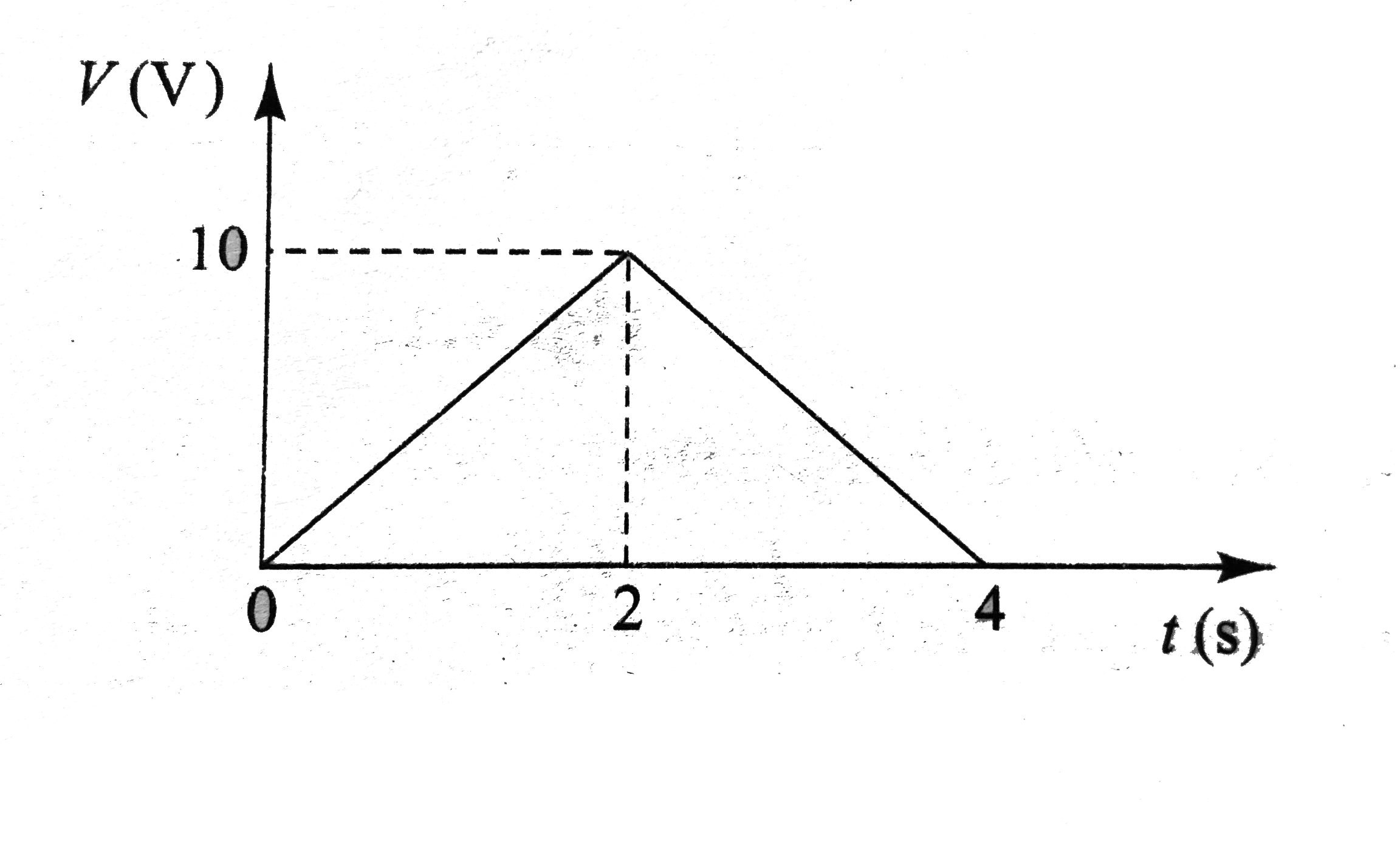 View Solution
View SolutionThe potential difference across a 2-H inductor as a function of time is shown in Fig. At time t = 0, current is zero.

The variation of current versus time isView Solution
Knowledge Check
- Question 1 - Select One or More
The potential difference across a 10H inductor as a function of time is shown in the figure. At t=0 current is zero. Then
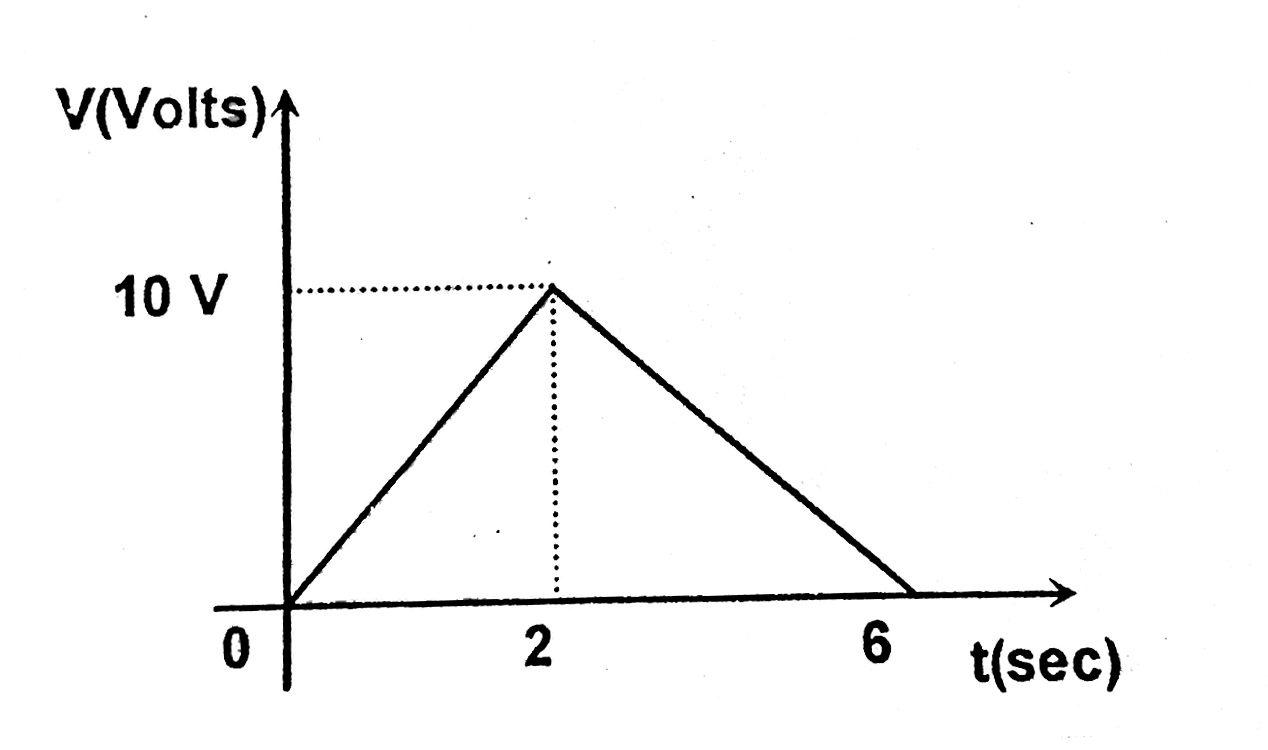 AThe current in the inductor at t=6 is 3 ampBThe current in the inductor at t=1 sec is 1/4 ampCThe current in the inductor at t=4 is 5/2 amp.DThe variation of current versus time parabola.
AThe current in the inductor at t=6 is 3 ampBThe current in the inductor at t=1 sec is 1/4 ampCThe current in the inductor at t=4 is 5/2 amp.DThe variation of current versus time parabola. - Question 2 - Select One
The potential difference across a 2H inductor as a function of time is shown in figure. At time t=0, current is zero
Current t=2 second is
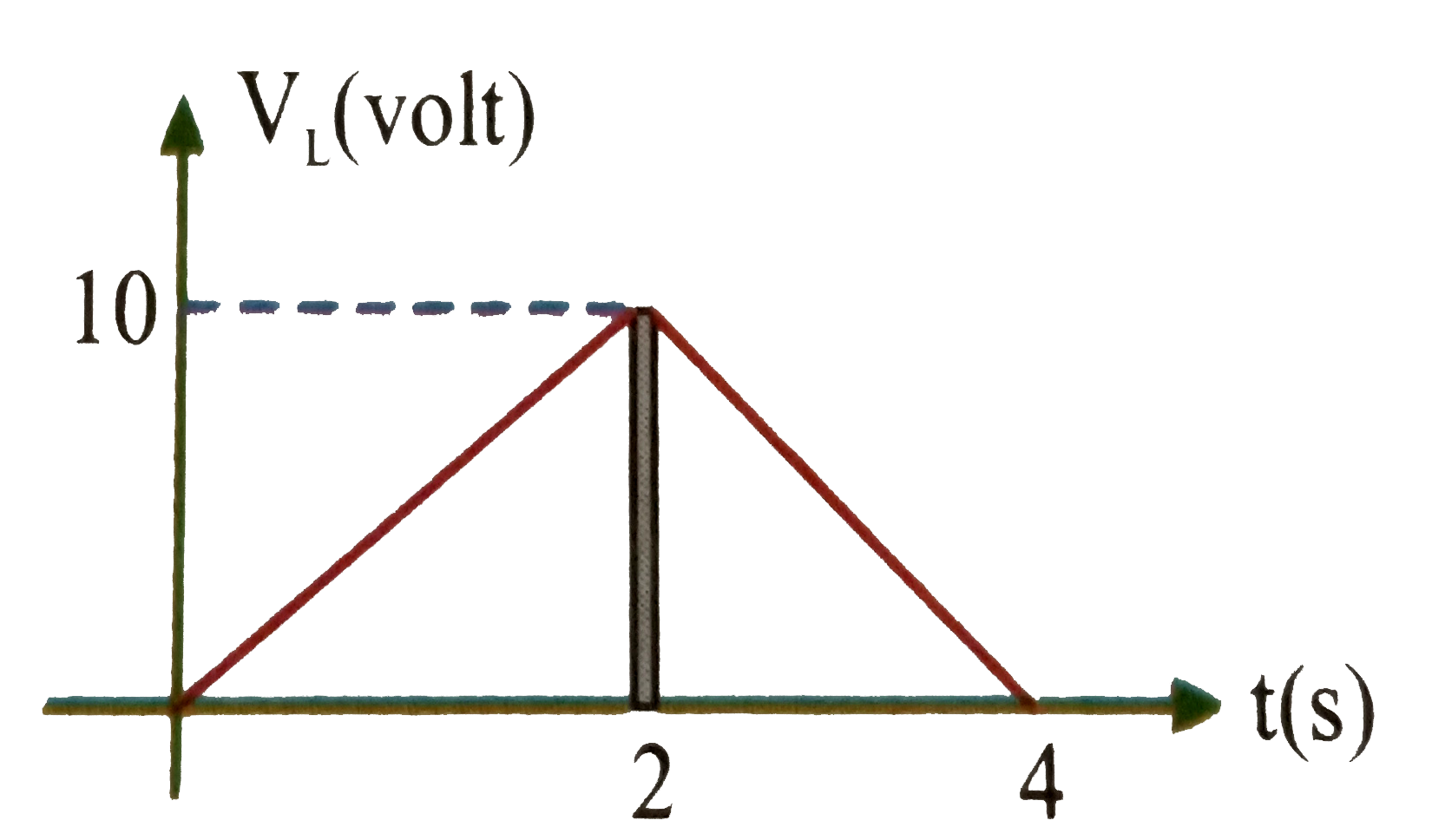 A1AB3AC4AD5A
A1AB3AC4AD5A - Question 3 - Select One
The potential difference across a 2-H inductor as a function of time is shown in Fig. At time t = 0, current is zero.
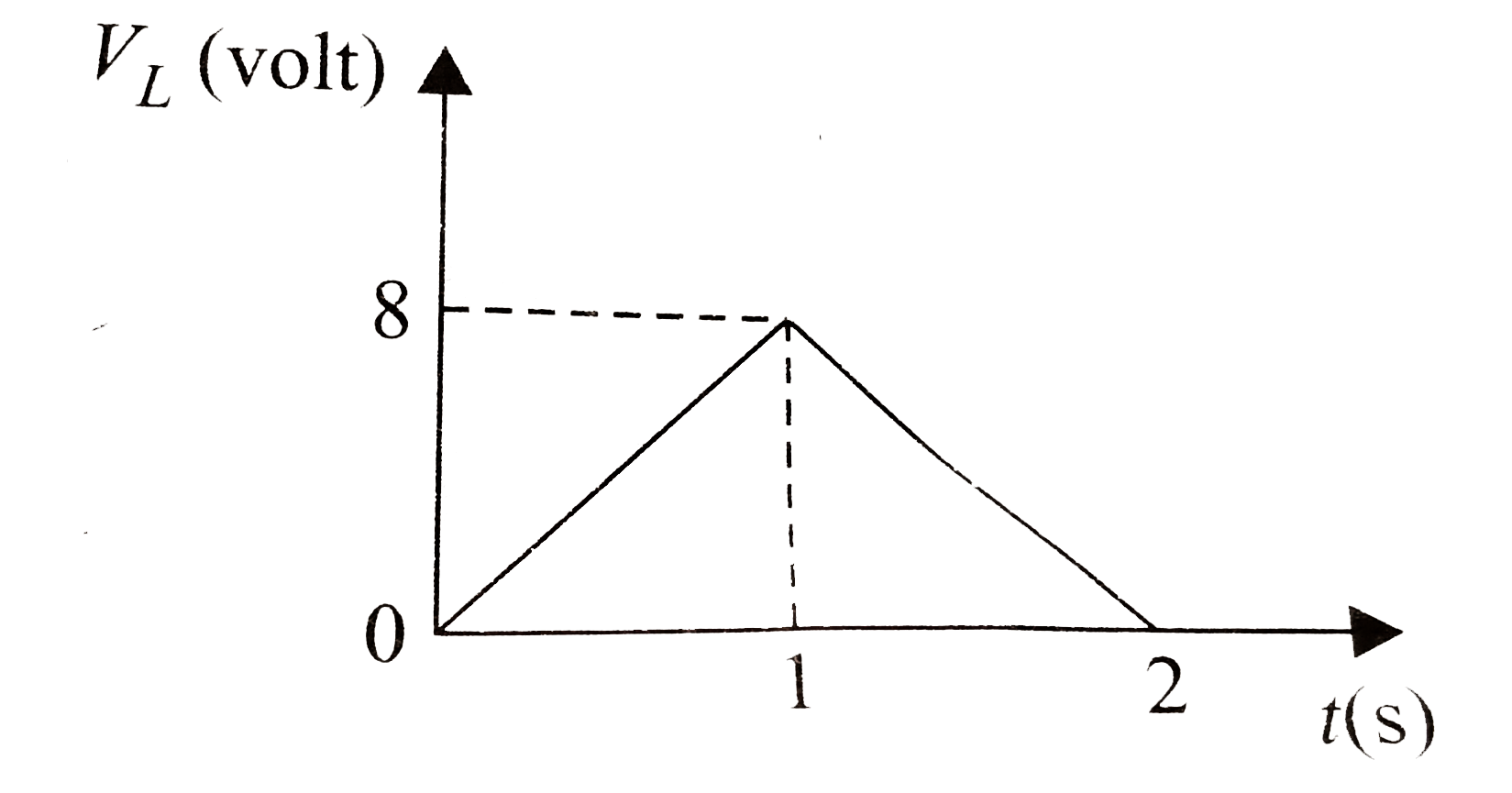
Current at t = 1 s isA1AB2AC4AD8A
The potential difference a 2H inductor as a function of time is shown in figure. At time t=0, current is zero
Current versus time graph across the inductor will beView SolutionThe potential difference across a 2-H inductor as a function of time is shown in Fig. At time t=0, current is zero.
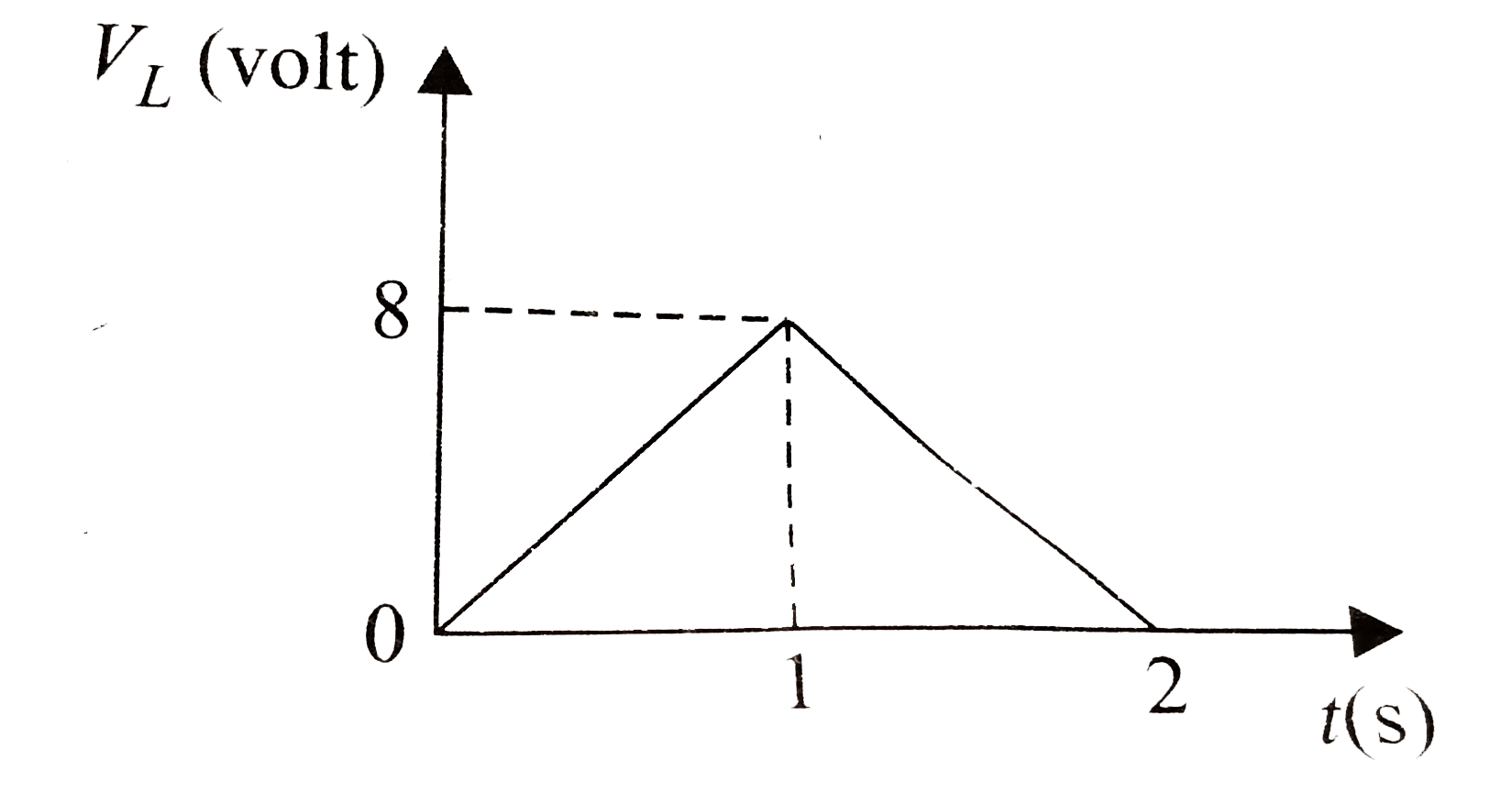
Area under VL−t graph givesView SolutionThe potentiak difference across a 2H inductor as a function of time is shown in the figure. At time t=0, current is zero.
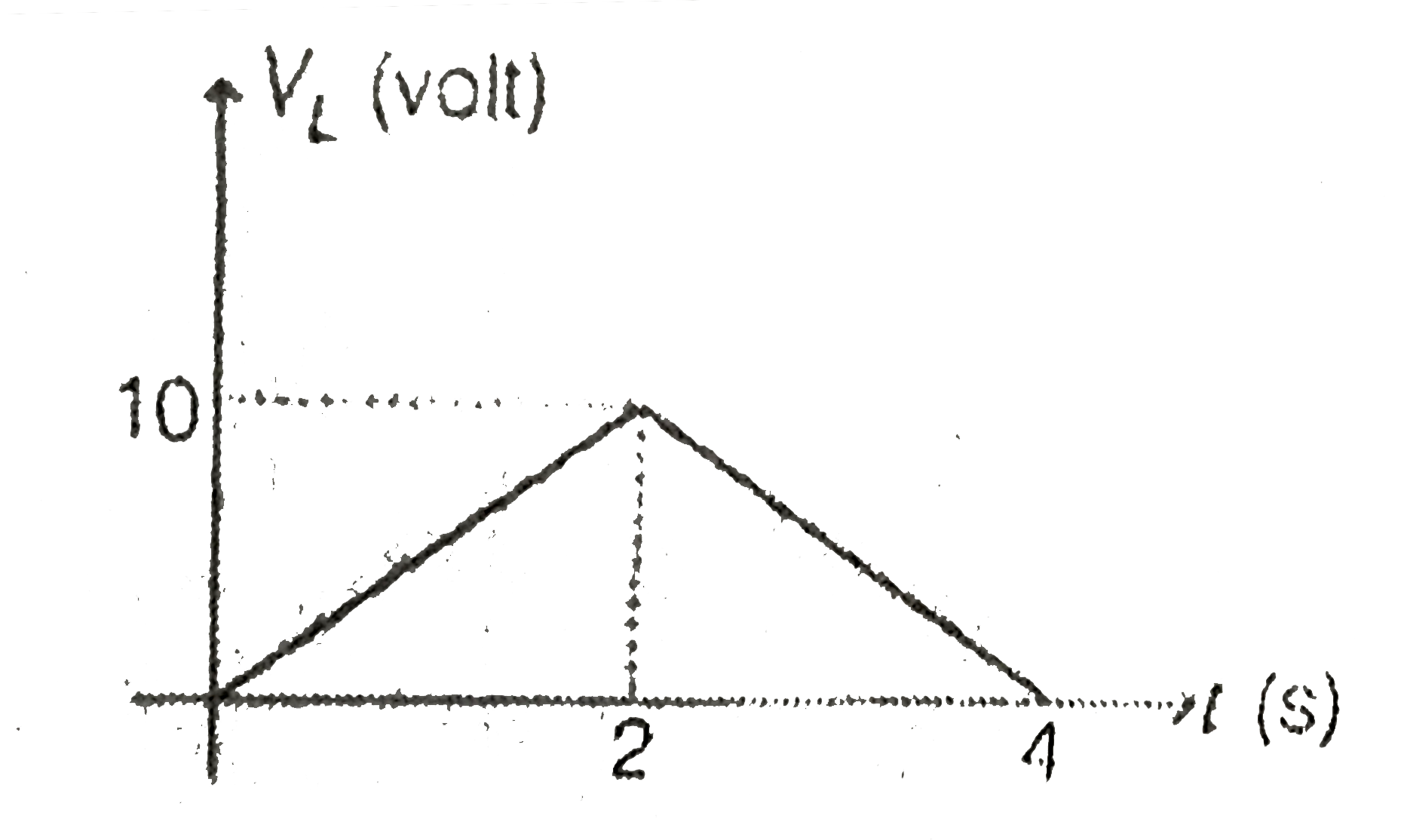
Current versus time graph across the inductor will beView SolutionThe potential difference across a 4 H inductor vary with time is as shown. The current is Zero at t=0, Then the current at time t=2s
 View Solution
View SolutionThe charge on a capacitor plate in a cirucuit, as a function of time,is shown in the figure :
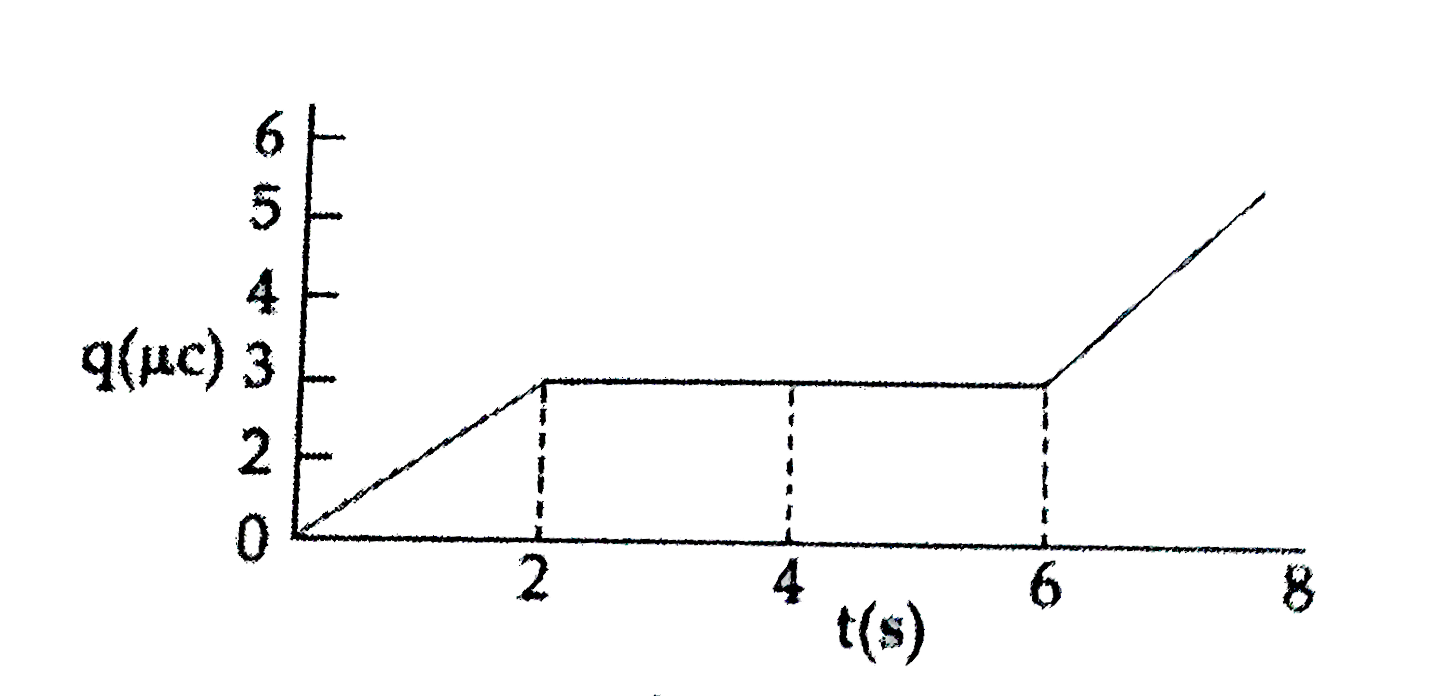
What is the value of current at t=4 s ?View Solution

